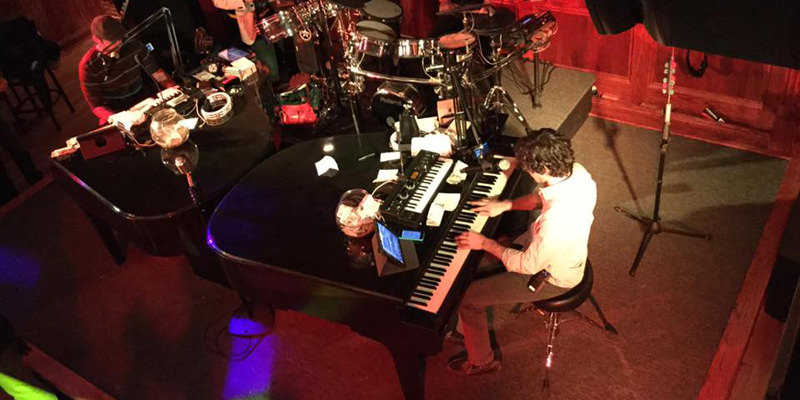Whenever the weekend rolls around, there’s that one question that nags at you to the point of tedium: do you go out or stay in? Let’s assume you’ve answered the question. It’s one of those weekends you’re going to force yourself to go out, to engage the public in some protracted, possibly intoxicated gesture of socializing. Now comes the next question: what the hell do you do?
Something different. Something a bit…pushier than your average night out. You’re looking for a night full of drinking, energy, and instrument-based one-upsmanship. That’s right. You’re wanting the boisterous magic of the dueling piano bar.
OK, in all likelihood (to a 98.7% degree of certainty), a dueling piano bar is not now, nor has it ever been, on your list of possible social outings. Even if it was, they’re a bit harder to find than, say, a crowded karaoke joint or another open mic night for sad folk singers. And that’s a shame, not just because the dulcet, melancholy tones of angst-folk are inevitably going to drive you insane. But dueling piano was an art form, the kind of wild communal activity that happens too rarely nowadays (outside of Red Sox fan rioting).
Before we start waxing nostalgic about gramophones and bowler hats, lets get to the history of dueling pianos. As in, whoever sat down to a piano and thought “You know what’s missing? An enemy.”
The form sort of co-originated with ragtime, an incredibly unique American musical style hybridized by African Americans in the late 19th Century. The most famous ragtime musician was Scott Joplin, who not only helped develop the style, but brought it to national attention at the Chicago World’s Fair. And yes, that’s Lando Calrissian playing him in the 1977 biopic (check out the dude on the right at 0:52, or watch him actually play at around 3:30).
Typically piano-based, ragtime overlays improvisational elements of jazz on a jaunty, “ragged” syncopated melodic line; it’s also unapologetically hasty. Ragtime players had to be incredibly nimble with the keys—not like a concert pianist, but more like someone trying to keep up with the energy of the music itself.
And that’s where it lends itself to the dueling piano competition. Sitting two piano players down to duel over Debussy’s “Clair de Lune” would make for a lovely, powerfully soporific evening. Sit them down over some ragtime and there’s room for interruptions, physical hot dogging, and musical call-and-response. Alas, ragtime peaked in popularity in the late 19th and early 20th centuries (it essentially passed away with Joplin in 1917). But that didn’t mean the end of dueling piano. By then, it seems, America had gotten a taste for music in competition (many generous decades before the onslaught of American Idol). By the early 1930s, the famous New Orleans bar Pat O’Brien’s was the first bar hosting dueling piano competitions on a regular basis. They even had a dedicated room.
We know what you’re thinking: where the hell can I find some dueling piano right now? Actually, it isn’t as hard as you’d think. In 1986 a piano bar called “Alley Cats” in Dallas resurrected the dueling piano format, this time incorporating more contemporary music, with the players not really fighting to showcase skill or speed (as in ragtime) but working together in a more traditional, if double piano, kind of entertainment.
There are at least a couple hundred dueling piano bars in the country, and then you have traveling acts like this one. Ragtime, unfortunately, is typically overlooked in favor of contemporary music and comedy bits. Not that there isn’t a place for those, but it would be nice if we could trade the Top 40 every once in a while for something upbeat, challenging, intrinsically American. A musical style worth fighting over.

